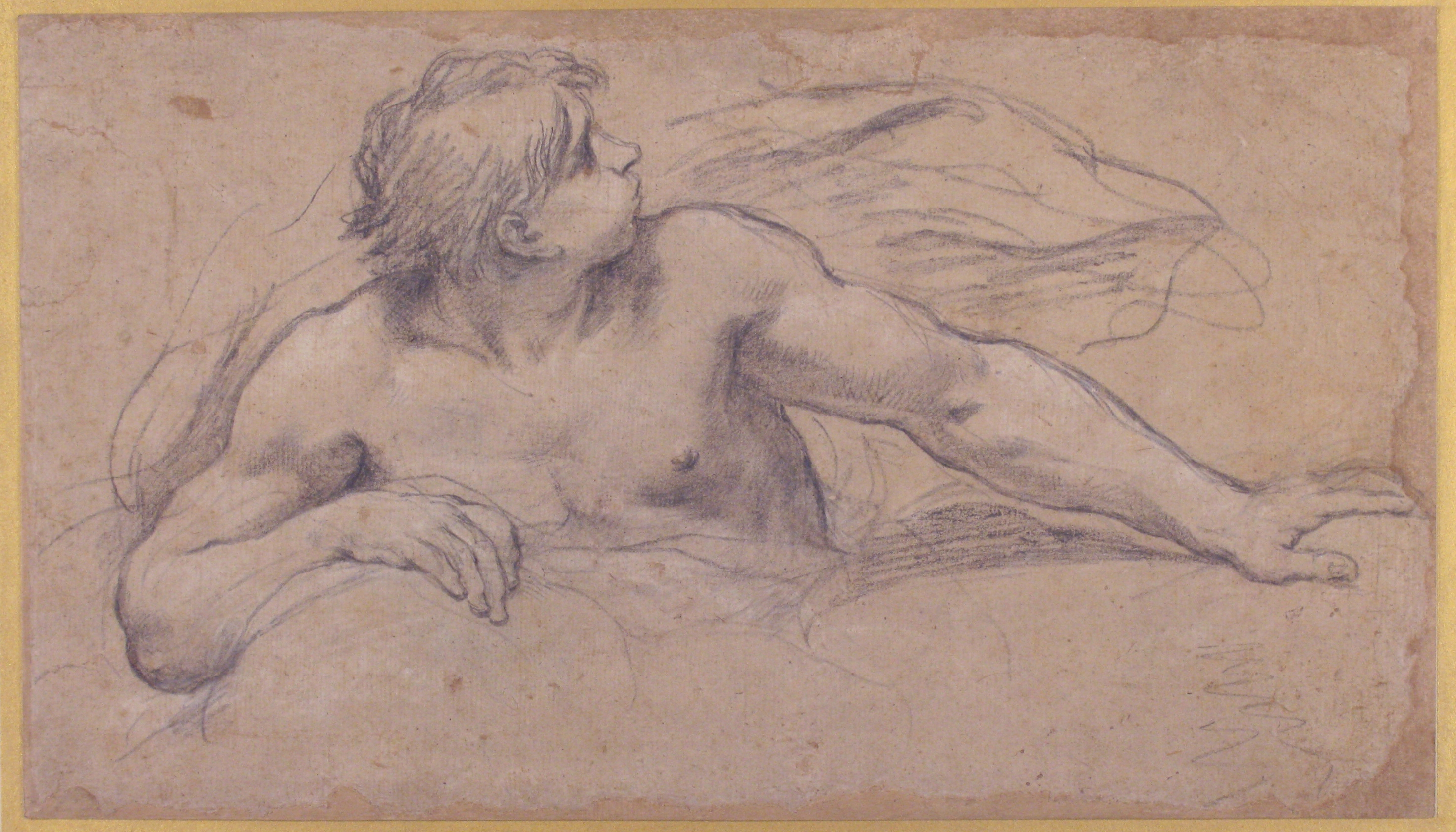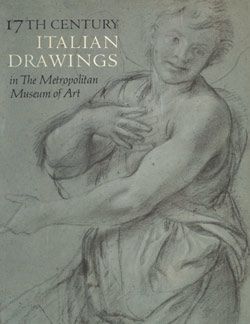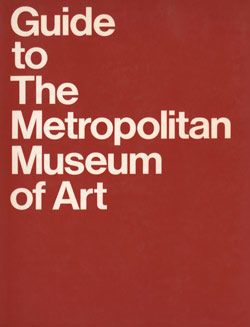A Wind God
Pietro da Cortona (Pietro Berrettini) Italian
Not on view
This study of a youth after life served for the figure of a wind god, appearing at the edge of the central oval of the frescoed ceiling in the "Sala di Apollo" (Palazzo Pitti, Florence). In 1641, the Baroque master Pietro da Cortona undertook the decoration of the state rooms of the Palazzo Pitti, using an iconographic program that dedicated each room to a planet symbolic of the virtues required of a prince, from youth through old age. The "Sala di Venere" was the first to be finished, then the "Sala di Giove" and the "Sala di Marte." It is not clear how far work on the elaborate stucco ornament for the "Sala di Apollo" had progressed when Cortona left for Rome in 1647. The frescoes had hardly been begun. Cortona himself was never able to return to Florence to complete the project, and the decoration was finished by his principal assistant, Ciro Ferri (Italian, 1634-1689), as late as 1661.
The chronology and the respective roles of Cortona and Ferri in the design process of the central fresco in the "Sala di Apollo" have been debaed, but the figure of a wind god seen in the Museum's drawing was certainly conceived and drawn by Cortona himself. Further studies of the wind god were reproduced by Malcolm Campbell (a small sheet of pen sketches in a private collection, his fig. 77; and a chalk sketch in the Istituto Centrale per la Grafica, Rome inv. 124347 verso, his fig. 78 [which Walter Vitzthum attributed to Cortona himself, while Campbell retained its old attribution to Ferri]). According to Jörg Merz (Dec 23, 2004), the drawing should be attrubuted to Ciro Ferri, like all the other studies for figures in the Sala di Apollo. The Museum's vast collection of drawings by Pietro da Cortona include two studies for the "Age of Gold" (inv. nos. 1972.118.250 and 1972.118.249), and two for the "Age of Bronze" (inv. nos. 64.48.2 and 1972.118.248).
Due to rights restrictions, this image cannot be enlarged, viewed at full screen, or downloaded.
This artwork is meant to be viewed from right to left. Scroll left to view more.









